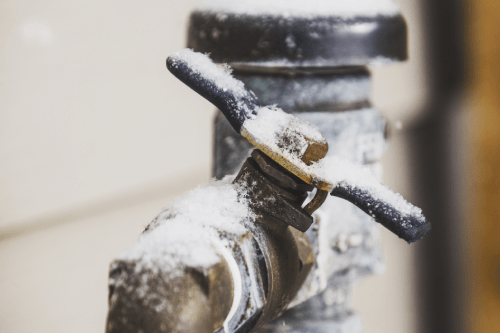Tips for Preventing Frozen Plumbing in Cold Weather: Professional Advice
Tips for Preventing Frozen Plumbing in Cold Weather: Professional Advice
Blog Article
How do you feel in regards to Prevent Frozen Pipes ?

Winter can damage your plumbing, especially by freezing pipelines. Below's exactly how to avoid it from happening and what to do if it does.
Intro
As temperature levels decrease, the threat of icy pipes rises, potentially causing pricey fixings and water damage. Comprehending exactly how to avoid icy pipes is crucial for property owners in cold environments.
Avoidance Tips
Shielding prone pipes
Cover pipelines in insulation sleeves or use warm tape to protect them from freezing temperature levels. Focus on pipes in unheated or exterior locations of the home.
Home heating techniques
Maintain indoor spaces appropriately heated up, specifically areas with pipes. Open up closet doors to allow warm air to flow around pipes under sinks.
Exactly how to recognize frozen pipes
Look for decreased water flow from taps, uncommon odors or noises from pipelines, and noticeable frost on exposed pipes.
Long-Term Solutions
Structural adjustments
Take into consideration rerouting pipelines away from outside walls or unheated areas. Include extra insulation to attic rooms, cellars, and crawl spaces.
Upgrading insulation
Invest in top notch insulation for pipes, attics, and walls. Correct insulation helps preserve consistent temperature levels and decreases the danger of frozen pipelines.
Securing Exterior Pipes
Garden pipes and outside faucets
Detach and drain pipes garden tubes prior to wintertime. Mount frost-proof faucets or cover outdoor taps with shielded caps.
Recognizing Frozen Pipes
What triggers pipes to freeze?
Pipelines freeze when revealed to temperatures below 32 ° F (0 ° C) for prolonged durations. As water inside the pipes ices up, it broadens, putting pressure on the pipeline wall surfaces and potentially triggering them to break.
Threats and damages
Frozen pipes can cause water disruptions, property damages, and pricey repair work. Burst pipelines can flooding homes and create comprehensive architectural damage.
Signs of Frozen Water Lines
Determining icy pipes early can prevent them from bursting.
What to Do If Your Pipes Freeze
Immediate activities to take
If you believe frozen pipes, keep faucets open to ease stress as the ice thaws. Make use of a hairdryer or towels soaked in warm water to thaw pipelines slowly.
Conclusion
Preventing frozen pipes needs aggressive measures and fast reactions. By recognizing the causes, indicators, and preventive measures, house owners can secure their pipes during cold weather.
5 Ways to Prevent Frozen Pipes
Drain Outdoor Faucets and Disconnect Hoses
First, close the shut-off valve that controls the flow of water in the pipe to your outdoor faucet. Then, head outside to disconnect and drain your hose and open the outdoor faucet to allow the water to completely drain out of the line. Turn off the faucet when done. Finally, head back to the shut-off valve and drain the remaining water inside the pipe into a bucket or container. Additionally, if you have a home irrigation system, you should consider hiring an expert to clear the system of water each year.
Insulate Pipes
One of the best and most cost-effective methods for preventing frozen water pipes is to wrap your pipes with insulation. This is especially important for areas in your home that aren’t exposed to heat, such as an attic. We suggest using foam sleeves, which can typically be found at your local hardware store.
Keep Heat Running at 65
Your pipes are located inside your walls, and the temperature there is much colder than the rest of the house. To prevent your pipes from freezing, The Insurance Information Institute suggests that you keep your home heated to at least 65 degrees, even when traveling. You may want to invest in smart devices that can keep an eye on the temperature in your home while you’re away.
Leave Water Dripping
Moving water — even a small trickle — can prevent ice from forming inside your pipes. When freezing temps are imminent, start a drip of water from all faucets that serve exposed pipes. Leaving a few faucets running will also help relieve pressure inside the pipes and help prevent a rupture if the water inside freezes.
Open Cupboard Doors
Warm your kitchen and bathroom pipes by opening cupboards and vanities. You should also leave your interior doors ajar to help warm air circulate evenly throughout your home.

I'm very taken with How To Avoid Freezing Pipes and I am praying you enjoyed the entire entry. Sharing is caring. Helping people is fun. We thank you for reading our article about Prevent Frozen Pipes .
Click Here Report this page